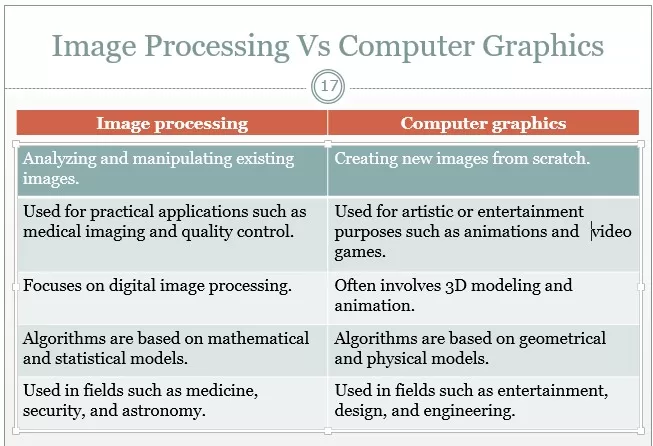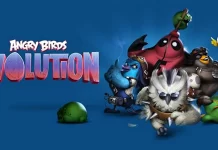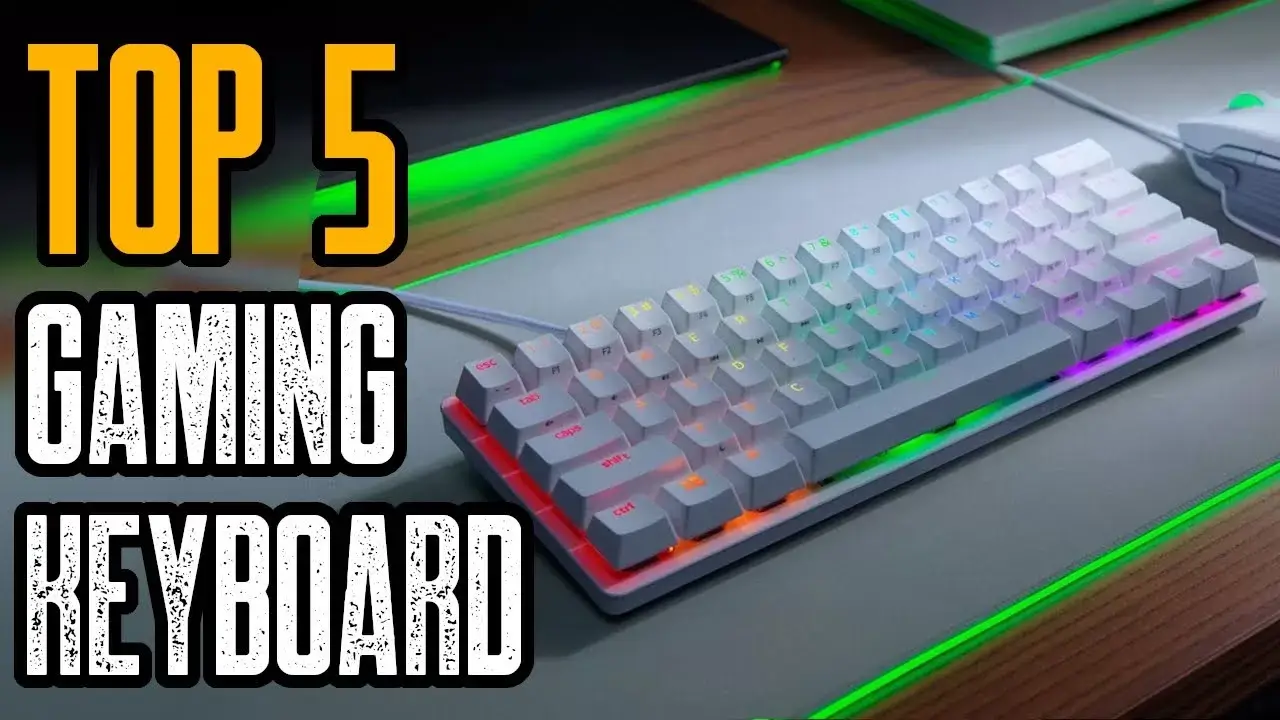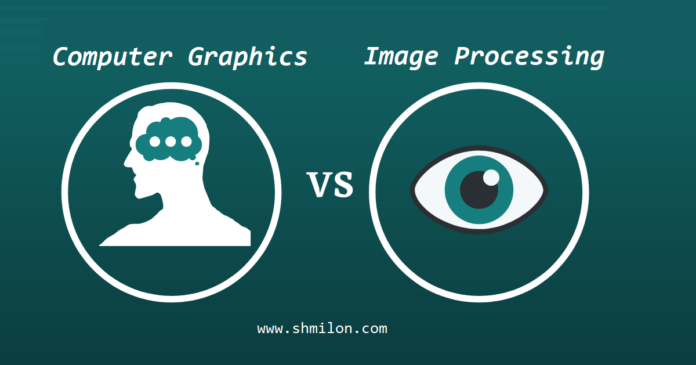Difference between Image Processing Vs Computer Graphics: Image processing and computer graphics are two closely related fields that involve the manipulation and generation of digital images. Despite their similarities, however, these two fields have different goals, methods, and applications. Understanding the differences between image processing and computer graphics is important for anyone working in the field of digital imaging, as it can help them choose the right tools and techniques for their particular needs.
In this article, we will explore the differences between image processing and computer graphics in more detail. We will start by defining each field and examining their goals and methods. We will then compare their applications and look at some of the key differences between the algorithms used in image processing and computer graphics. Finally, we will discuss the importance of understanding these differences for anyone working in the field of digital imaging.
Image processing is the field of analyzing and manipulating existing images. This can include tasks such as enhancing images, recognizing patterns, and extracting information from images. Image processing is typically used for practical applications such as medical imaging, satellite imagery analysis, facial recognition, and quality control in manufacturing. Image processing focuses on the processing of digital images, which includes tasks such as image filtering, segmentation, feature extraction, and restoration. Image processing algorithms tend to be based on mathematical and statistical models to extract and enhance information from images.
In contrast, computer graphics involves creating new images from scratch. This can include tasks such as designing 2D and 3D models, creating animations, and rendering realistic images. Computer graphics is often used for artistic or entertainment purposes such as creating animations, visual effects, and video games. It is also used in fields such as architecture, product design, and advertising. Computer graphics often involves working with 3D models and animation, which includes tasks such as modeling, texturing, lighting, rigging, and animation. Computer graphics algorithms are based on geometrical and physical models to simulate realistic images.
While image processing and computer graphics have some similarities, they also have some key differences. One of the main differences is their applications. Image processing is used in a wide range of fields, including medicine, security, remote sensing, astronomy, and many others. In contrast, computer graphics is used in a wide range of fields, including entertainment, design, architecture, engineering, and many others.
Another key difference is the algorithms used in image processing and computer graphics. Image processing algorithms tend to be based on mathematical and statistical models, while computer graphics algorithms are based on geometrical and physical models. Some common image processing algorithms include edge detection, image segmentation, and object recognition. Some common computer graphics algorithms include ray tracing, rasterization, and shading.
5 Differences between Image Processing Vs Computer Graphics

Image processing:
- Image processing involves analyzing and manipulating existing images. This can include tasks such as enhancing images, recognizing patterns, and extracting information from images.
- Image processing is typically used for practical applications such as medical imaging, satellite imagery analysis, facial recognition, and quality control in manufacturing.
- Image processing focuses on the processing of digital images. This includes tasks such as image filtering, segmentation, feature extraction, and restoration.
- Image processing algorithms tend to be based on mathematical and statistical models to extract and enhance information from images. Some common algorithms include edge detection, image segmentation, and object recognition.
- Image processing is used in a wide range of fields, including medicine, security, remote sensing, astronomy, and many others.
Computer graphics:
- Computer graphics involves creating new images from scratch. This can include tasks such as designing 2D and 3D models, creating animations, and rendering realistic images.
- Computer graphics is often used for artistic or entertainment purposes such as creating animations, visual effects, and video games. It is also used in fields such as architecture, product design, and advertising.
- Computer graphics often involves working with 3D models and animation. This includes tasks such as modeling, texturing, lighting, rigging, and animation.
- Computer graphics algorithms are based on geometrical and physical models to simulate realistic images. Some common algorithms include ray tracing, rasterization, and shading.
- Computer graphics is used in a wide range of fields, including entertainment, design, architecture, engineering, and many others.
Conclusion:
In conclusion, image processing and computer graphics are two distinct fields that share some similarities but have different goals, methods, and applications. Image processing involves analyzing and manipulating existing images for practical applications such as medical imaging, satellite imagery analysis, and facial recognition. Computer graphics involves creating new images from scratch for artistic or entertainment purposes such as animations and video games. Understanding the differences between image processing and computer graphics is important for anyone working in the field of digital imaging, as it can help them choose the right tools and techniques for their particular needs.





























